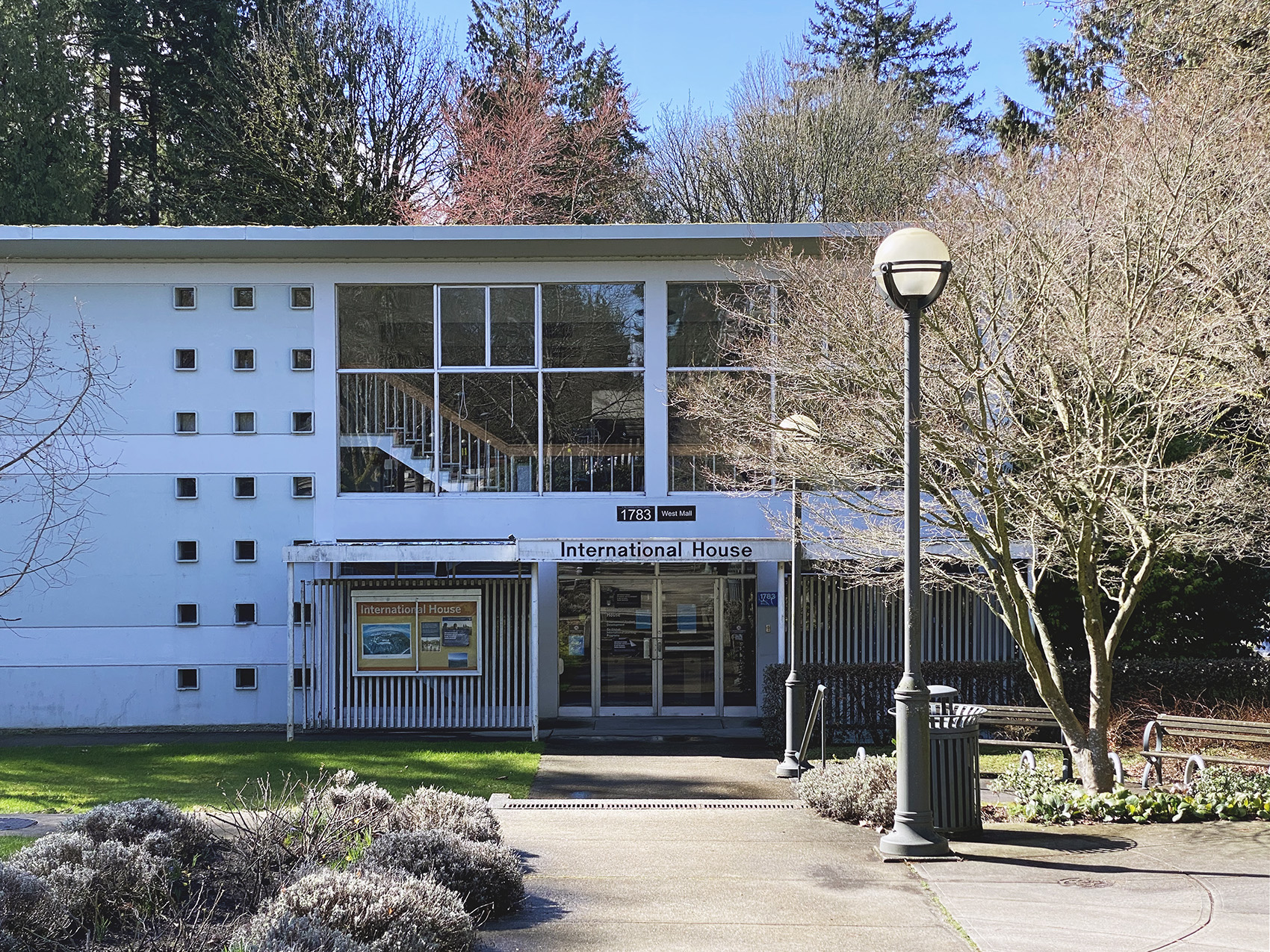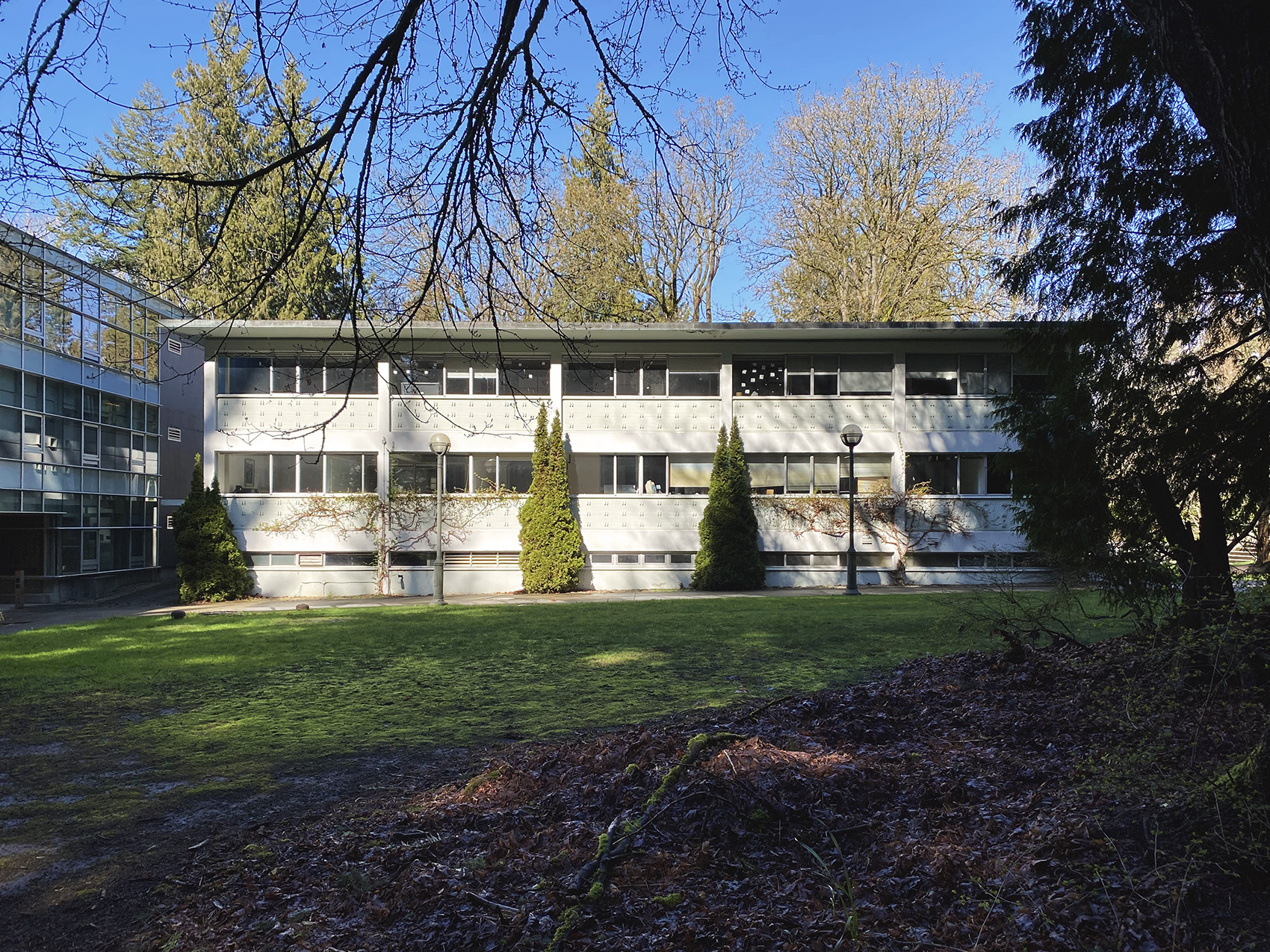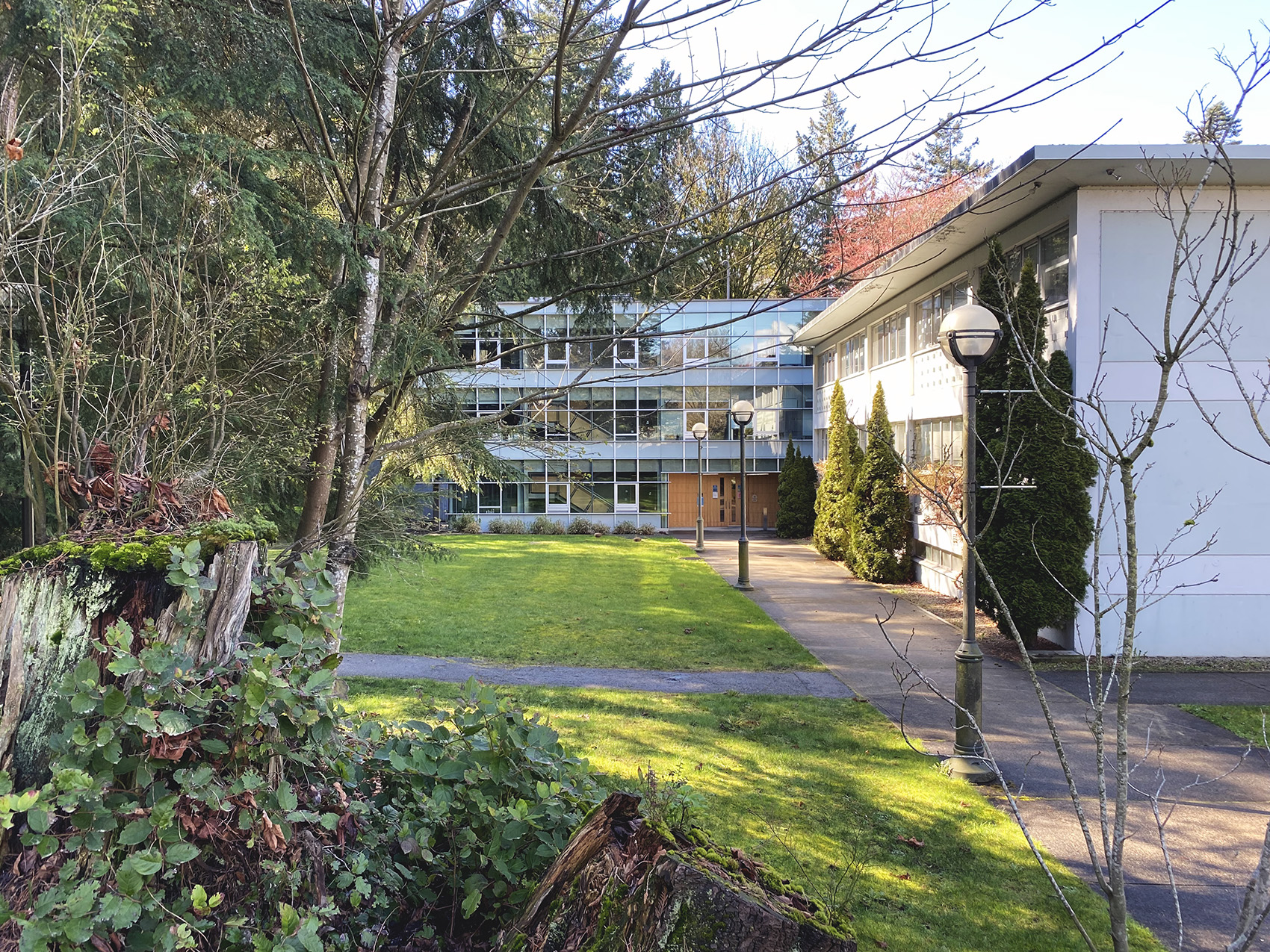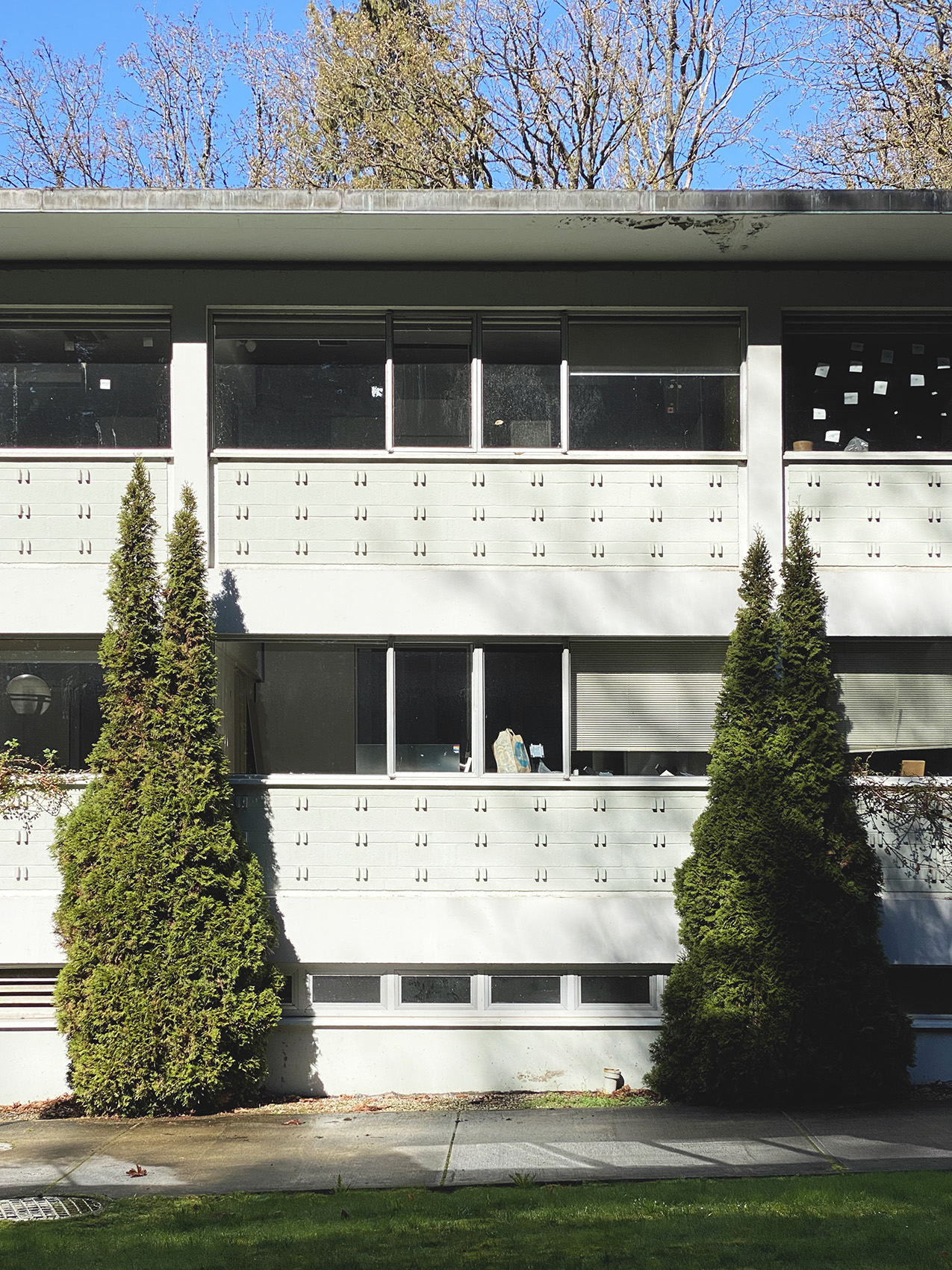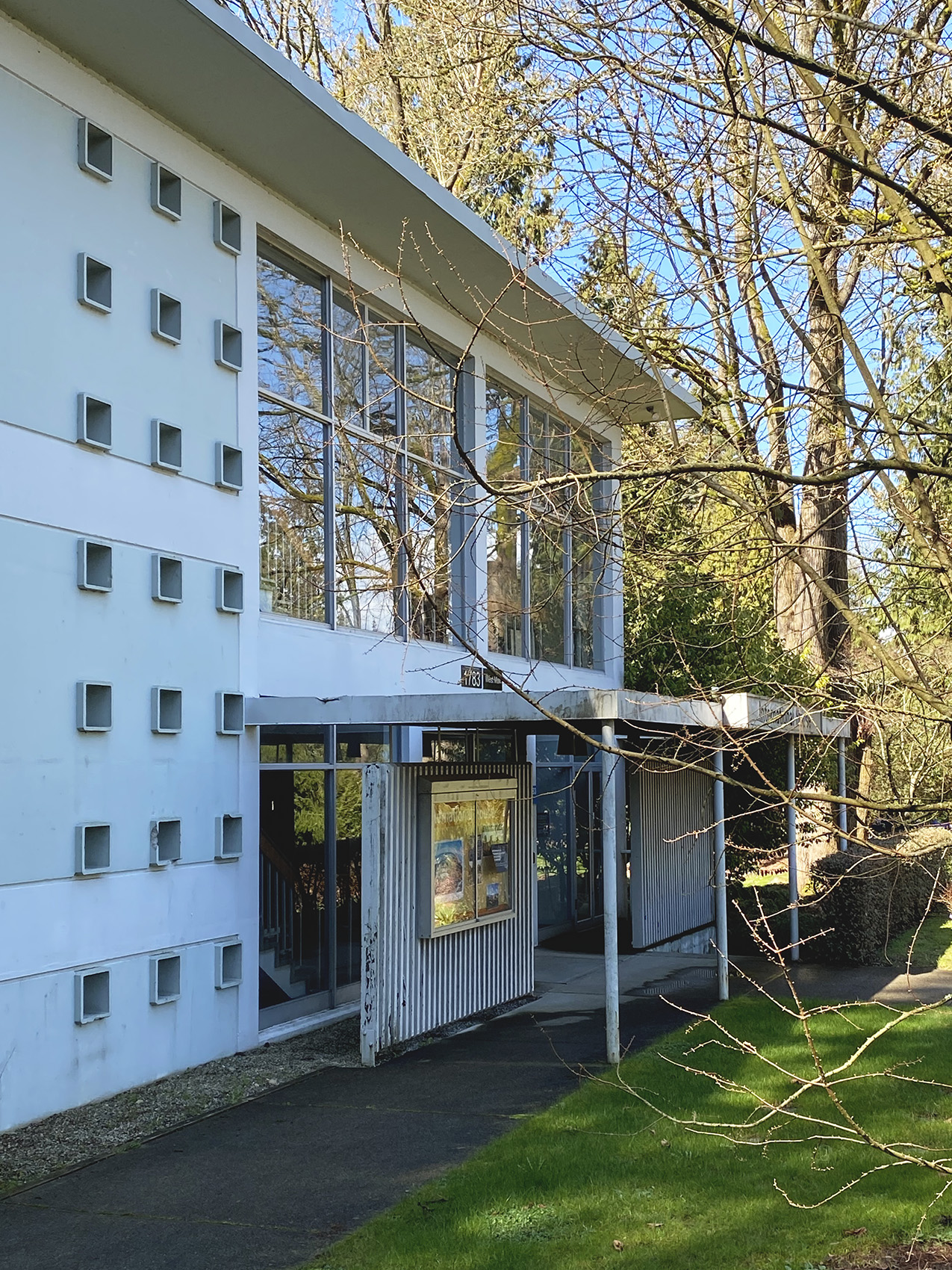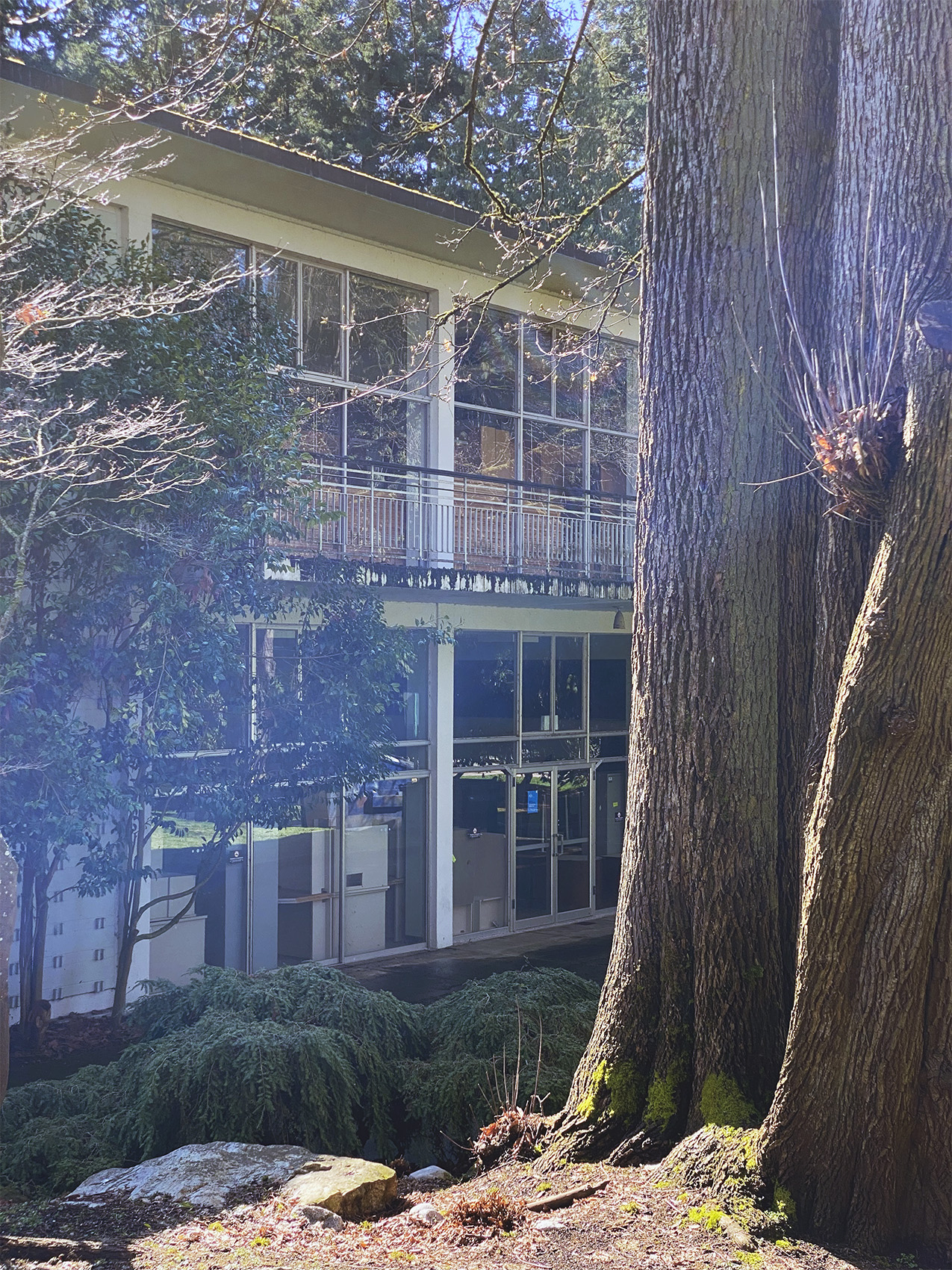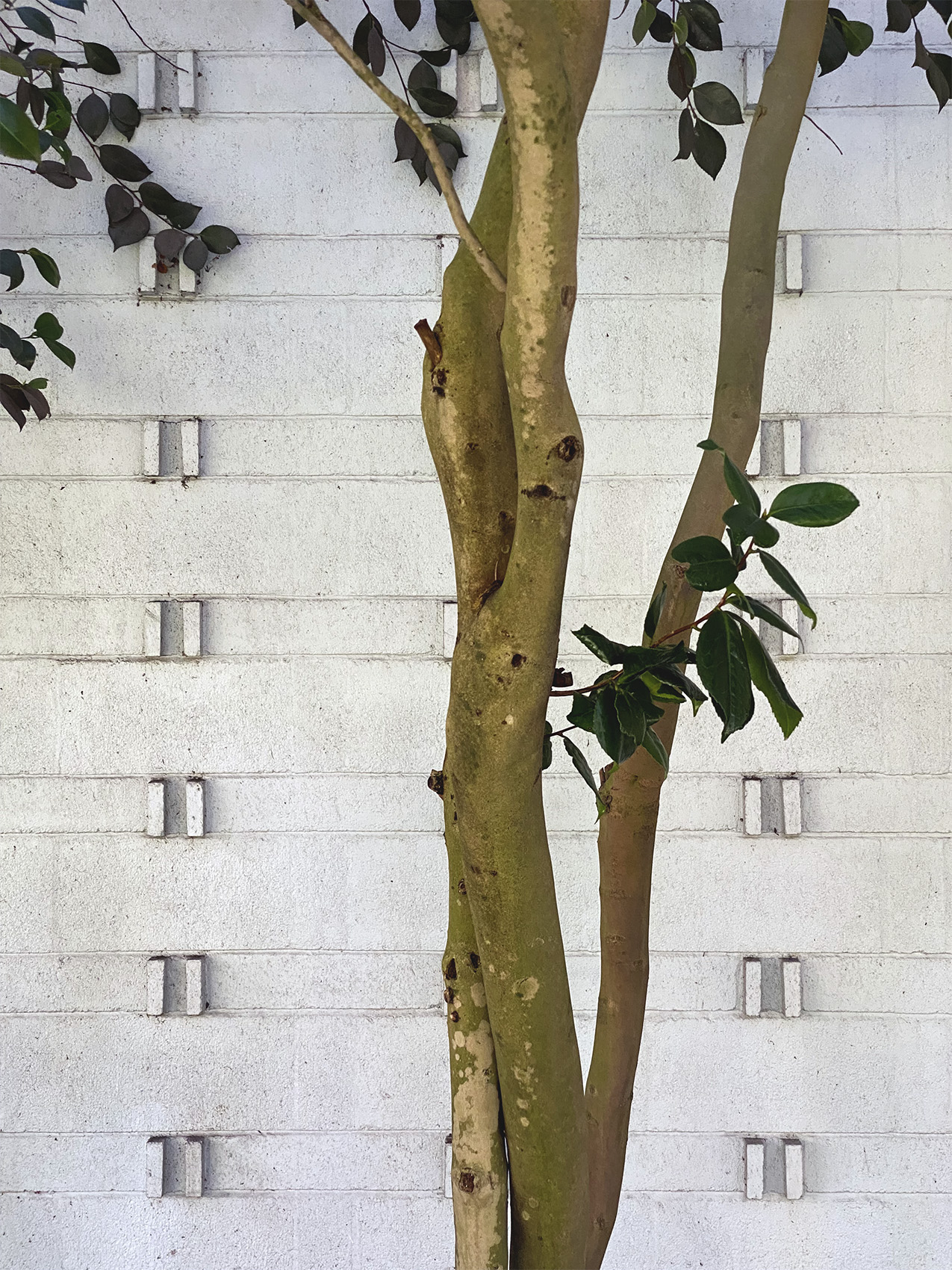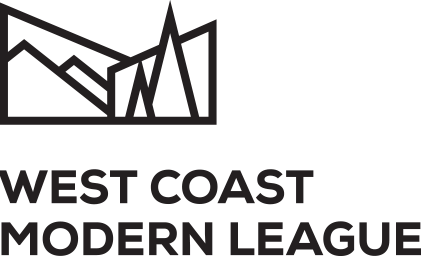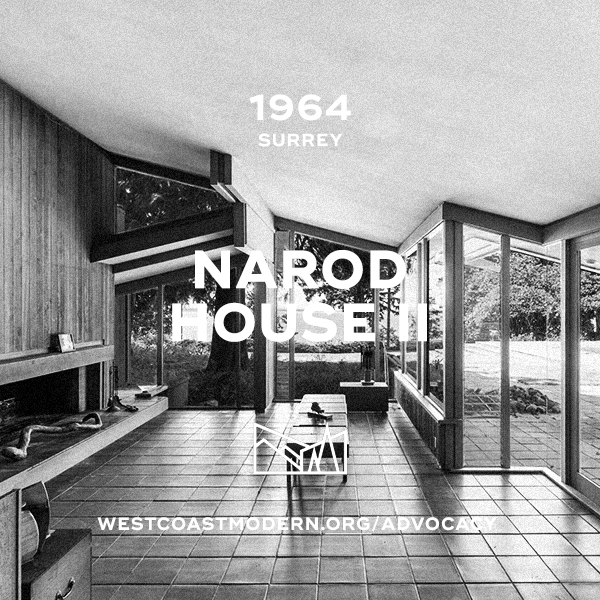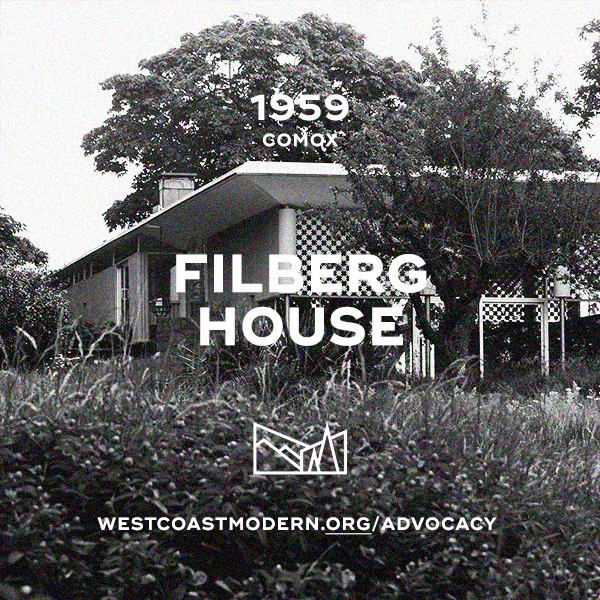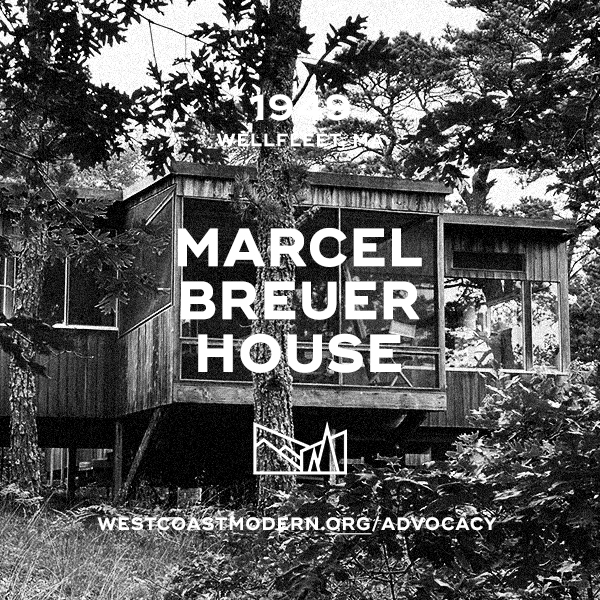UBC International House, 1958
International House, 1958
University of British Columbia, Vancouver, BC
Designed by Frederic Lasserre
Official Opening March 4, 1959 by Eleanor Roosevelt
PLACES | UBC International House
Slated for Demolition
Last update May 13, 2022
UBC’s International House was designed in 1957-58 by Frederic Lasserre, first director of the university’s School of Architecture. Modest in scale but elegantly articulated, IH embodies both the political ideals of post-war internationalism and the architectural ethics of international modernism. It was opened on March 5, 1959 by Eleanor Roosevelt and UBC President Norman McKenzie in the context of a symposium on world peace entitled “Can Brotherhood Prevail in the Space Age?” As stated in its constitution of 1955, the mission of IH is to promote “understanding and goodwill among the students of different nationalities and races attending the University of British Columbia … thereby fostering more friendly international relationships and world peace.” As a social centre hosting multicultural gatherings and student services, IH welcomed generations of international students to UBC.
A clean rectilinear block of concrete and glass set into contrast with its green surroundings, IH exemplifies many tenets of modernist design. There are two major facades—the entrance addressing West Mall, the north wall looking onto Marine Drive. By contrasting closed walls with layerings of transparent grids, the entrance façade clearly delineates a major division in program: three stories of offices to the left, and two superimposed public activity spaces to the right. Negotiated by a beautifully considered freestanding staircase, the flow of interior space is dictated by this syncopated 2:3 relationship. The main gathering hall upstairs, with a stage and a large open floor area, is surveyed by internal balconies opening off the third floor, while external balconies—originally with ocean views—are accessed through the extensively glazed north wall. Fields of tiny square windows punctuate both ends of the main corridors on all three floors, signaling the presence of an internal circulation route. In transitional zones, finely conceived accents in wood—screens at the entrance and in the lobby, as well as balconies and stair rails—lend visual and tactile warmth.
Frederic Lasserre (1911-61) brought a firsthand understanding of European modernism to Vancouver. Born in Geneva, he trained in Zurich and graduated from the University of Toronto School of Architecture in 1934. He then worked in London with Berthold Lubetkin and the avant-garde design group TECTON, perhaps the most important exponent of the International Style in Great Britain at that time. After teaching at McGill, Lasserre was invited to become the founding director of UBC’s new School of Architecture in 1946. In this role, abetted by such figures as Ned Pratt and B.C. Binning, he fostered a culture of architectural modernism in Vancouver. In his relatively short life, Lasserre completed only a handful of buildings: at UBC he co-designed the War Memorial Gym (1951), the Friedman House (1953, fortuitously saved from demolition in 2016) and the Faculty Club (1958-59). He died in a mountain climbing accident in England in 1961.
The initiative to build IH came from UBC students. When the International Students Club, housed in an army hut since 1951, petitioned to build a more permanent structure, the university president was enthusiastic and generous financial assistance came from the Vancouver Rotary Club. The initial idea was to create a residential building along the lines of earlier International Houses in New York, Berkeley, and Chicago, though a planned dormitory did not materialize. IH was an important part of UBC’s post-war expansion, which saw several new modernist buildings rising on campus. An extensive fonds of historical documents relating to IH, including heritage reports, is held in UBC Library.
By Chris Pearson
Instructor, Art History, Capilano University
Slated for Demolition
Early in 2022, UBC’s department of Campus and Community Planning confirmed its intention to demolish International House. While acknowledging the building’s long-recognized historical and architectural merits, a committee concluded that the perceived need to rebuild much of IH’s structure to bring it up to current code and seismic standards would fatally compromise its aesthetics and historical value. It is presently unoccupied, structurally intact but filled with stored office furniture. Nevertheless, many in the community feel strongly that this architecturally significant structure, an important witness to the rise of architectural modernism in Vancouver and an idealistic symbol of international cooperation, should be retained for future generations to use and appreciate.
Share Your Connection to International House
What are your memories of the UBC International House? We have heard time and again from people who have a special connection to this building. For many, their first experience on campus started by passing through the hallways of International House. If you have a story to share about UBC International House, we want to hear from you. In a celebration of the building’s storied history and contributions to our region, memories submitted will be reviewed, posted here to the website, and may be shared on social media. Thank you for your contributions.
- July 18, 2022: The League asks for your stories of UBC International House. In a celebration of the building’s storied history and contributions to our region, we want to hear your memories or anecdotes about the building. Submissions will be reviewed, posted here to the website, and may be shared on social media. Thank you for your contributions.
- May 13, 2022: The UBC department of Campus and Community Planning has confirmed its intention to demolish Frederic Lasserre’s 1958 International House. At present, the building is unoccupied but remains intact.
